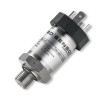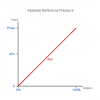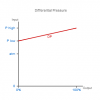Negative Gauge Pressure is the difference in pressure between any vacuum and atmospheric pressure.
The maximum possible negative gauge pressure is always limited by the current ambient atmospheric pressure, which constantly varies, but is typically around 1 bar absolute.
Featured negative gauge pressure measurement products
 Monitoring vacuum depression in food powder drying towers with a low range dp transmitter - DP transmitter for precise vacuum measurement and control for coconut powder drying towers to ensure consistent product quality.
Monitoring vacuum depression in food powder drying towers with a low range dp transmitter - DP transmitter for precise vacuum measurement and control for coconut powder drying towers to ensure consistent product quality. DMK457 Marine Approved Pressure Transmitter - Marine approved pressure transmitter with 4-20mA current loop output for shipbuilding with optional CuNiFe housing for sea-water compatibility
DMK457 Marine Approved Pressure Transmitter - Marine approved pressure transmitter with 4-20mA current loop output for shipbuilding with optional CuNiFe housing for sea-water compatibility
Glossary of Pressure Reference technical terms
- Gauge Reference Pressure
- MSL – Mean Sea Level
- Reference Pressure
- SG – Sealed Gauge
- Vented Cable
- Vented Gauge
Help from Pressure Reference resources
- Measuring vacuum with negative gauge or absolute ranges
- What is the difference between gauge and absolute pressure measurement
- Measuring negative pressure using a positive differential pressure range
- Not reading zero when pressure is vented to atmosphere
- What does negative and positive gauge pressure mean





